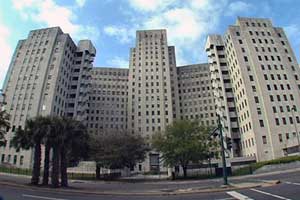by Joyce Chediac and Paul Wilcox

In the U.S, the richest country in the world, Washington is coordinating the recovery effort. In Lebanon, a tiny poor and war-torn nation, Hezbollah, a grassroots resistance movement that Washington called “terrorist,” organizes most of the reconstruction. Hezbollah receives substantial aid in this effort from Syria and especially Iran, countries Washington also calls “terrorist.”
What is the situation several years later? Which group would you trust to rebuild if you lost your home?
In New Orleans, according to the Center for Constitutional Rights, federal funds have gone to large businesses. Renters and elderly homeowners, 60 percent of the population, got none of the $10 billion allocated to repair homes; 37,000 families are eligible for the government’s Road Home program but have not been given the money.
In Lebanon, Hezbollah prioritized meeting the needs of the poorest Shiite areas. Immediately after the war, Hezbollah gave each displaced family $12,000 U.S. in cash, a very large sum. Some $2,000 was for a year’s rent, while their homes were rebuilt, and $10,000 was for furniture.
Today, indigent residents of New Orleans are still scattered around the country. They are being pushed out of hotels, shelters and housing assistance programs, with nowhere to go. In New Orleans, thousands of good public housing units have been demolished, and one-third of the houses are vacant. Homelessness is high. Charity Hospital is still inaccessible to most of the poor.
In Lebanon, within a year most families were back in their villages or neighborhoods, some still waiting for new housing. A huge construction effort is underway to rebuild the hundreds of villages and neighborhoods, shops, offices, warehouses, hospitals and schools that the Israeli attack demolished. Construction should be completed by December 2009.
Today, New Orleans’ mostly African- American Lower 9th Ward “looks like an oversized graveyard,” according to a New York Times story published Aug. 31.
Dahia, a Beirut ghetto of a million poor people and the area hardest hit by the Israeli bombing, is filled with high-rise housing under construction. It is being rebuilt much better than before.
According to the builders, it will have “more lighting and open spaces, traffic reduction through improving roads, new parking lots, and gardens to give the streets and buildings a greater sense of place and character.” People will have a choice of countertops and other variables for their new apartments.
In New Orleans, many public hospitals and schools remain closed. Rents have doubled or tripled.
Dahia boasts a new cardiac specialty hospital donated by Iran. Hospitals there provide free health care. A large restaurant serves traditional Lebanese food at low prices for working families. Clothing, food and other necessities are cheaper in Dahia than in other parts of Beirut.
© 2009 Workers World. This story was originally published Sept. 13, 2009, by Workers World, 55 W. 17th St., New York NY 10011, ww@workers.org, www.workers.org, at http://www.workers.org/2009/world/lebanon_new_orleans_0917/index.html.





